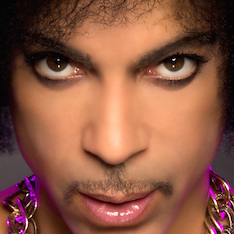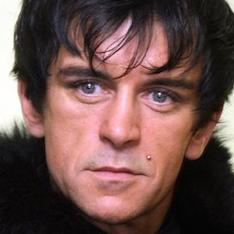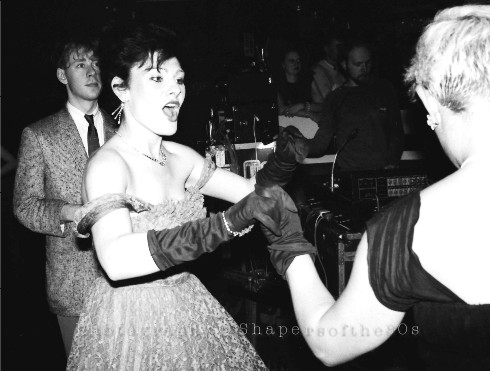
Dressing up on Canvey, 1982: Gold Mine girls maintain the high standards set by the club over the past decade. (Photographed by Shapersofthe80s)
❚ NOVEMBER 9 SEES maverick deejay Chris Hill front the fourth Official Gold Mine Reunion back this year on Canvey Island at The Monico, a stone’s throw away from the site of the nightspot renowned as the birthplace of British jazz-funk.
Other members enlisted from the South-East’s Funk Mafia who ruled at Caister weekenders and the big soul all-dayers will be Jeff Young and Snowboy and ace record-shopkeeper for the rare groove scene, Gary Dennis. The reunion will be echoing to sounds from Donnie Hathaway to Chick Corea, from BT Express to Mastermind. But first, a taste of the Gold Mine’s tenth year as I reported it 31 years ago…
Ten years of the Canvey Island Gold Mine
[First published in The Face, August 1982]
❏ SOME SAY THE whole of today’s style scene has its roots here… The Gold Mine, Canvey Island, has passed into countless legends for the trends it has set and on August 14 manager Stan Barrett pulls a champagne cork to celebrate his club’s tenth birthday.
Mind you, feet have pounded its original sprung maple dancefloor since 1949. Southend and the towns of the Essex style triangle have reared cults since the word was invented, so when in 1972 the Gold Mine began playing what rivals then called “silly music” – My Guy and all those soul sounds – the local hipsters took their cue. It was that wild man among deejays, Chris Hill, who, as the only one south of Lancashire playing soul, put Canvey Island on the map and ushered in the soulful new Age of the Dance.
 Then in 1975, for a reason no more obscure than a simple father to son legacy, came a Glenn Miller Swing revival, which triggered the then unique clubbing fad of nostalgic dressing-up.
Then in 1975, for a reason no more obscure than a simple father to son legacy, came a Glenn Miller Swing revival, which triggered the then unique clubbing fad of nostalgic dressing-up.
Stan Barrett says: “Chris played Singin’ In The Rain one Saturday and of course even kids who couldn’t remember the original knew the words to it. Everyone started being Gene Kelly on the dancefloor, dressing as Gls and Betty Grable. So he played Moonlight Serenade then the Andrews Sisters’ Boogey Woogey – that’s when they all started to jive and to dress up.”
The Sun, the tabloid daily paper which has a remarkably consistent record for picking up trends first, featured the Gold Mine. “Coaches came from Newcastle, Wales, everywhere,” Barrett remembers. The rest is undisputed history for the influence of Essex stylists on emergent London nightlife scene has been visible from the 60s Mod scene to Chaguaramas and the Vortex to the Blitz and beyond.
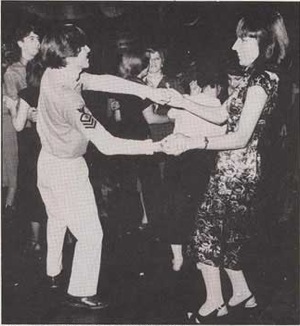
Swing revival 1975: Glenn Miller tunes inspired jiving and GI uniforms at the Gold Mine (courtesy Brian Longman, CanveyIsland.org.uk)
The key to the Gold Mine’s success? Impossible selectivity at the door, which may sound over familiar today. Barrett says: “Nobody too old. And only people into style which means your own style, not Gary Numan’s. It costs you at first but look how it pays off in the end. People have never come to the Gold Mine for a good drink up, always the music and the scene.”
Right now in summer ’82, Essex is a musical ball of confusion with the electronic camp of Depeche Mode and Talk Talk holding sway. Drinking with Talk Talk drummer Lee Harris at the Gold Mine the other night was clubrunner about Southend, Steven Brown, who sports a £100 PW Forte Sixties suit and reckons that psychedelia is still big there, heaven help us. He has also done time with a non-psychedelic local band of jokers called Doodle Sax: “It’s had about 35 people in it at various times but we’re not very serious.” One of them, synthesiser doodler Andy Norton, says the vibes are already about for much heavier rhythms. “Music has to turn much more macho.”
And if there are any visual indicators at the Gold Mine today, they are less fancy, more free. A regular called Andy “from Stanford No Hope” says: “Make up is so out of date, it’s like watching old crows trying to pull. The Gold Mine is much better now that we don’t get all the arty students down.”
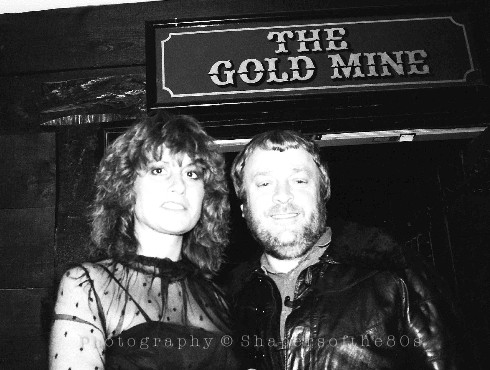
Guardian of the Gold Mine, 1982: manager Stan Barrett and his wife Jayne. (Photographed by Shapersofthe80s)
Nov 11 UPDATE: MOVIN’ AS EVER TO
BRASS CONSTRUCTION
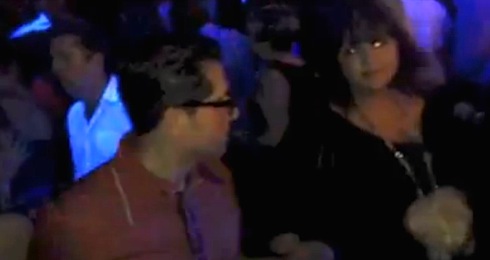
Saturday night on Canvey, 2013: shonky screengrab from Trizzles Green Trees’ video at Facebook. Click to view
❏ “Banging best night in ages,” reported Essex Funker Trizzles Green Trees the morning after when she posted this video of the Gold Mine Reunion’s dancefloor heaving to Brass Construction’s 1975 classic Movin’. [Click the pic to run the vid at Facebook.] She added: “We opened the door to the main room and you were just knocked away instantly by the vibe and the atmosphere… everyone was smiling and dancing whether you knew them or not.”
One of the hosts deejay Snowboy Mark called it “a road-block event” at The Monico, Canvey Island. “There were so many old faces there, going way back to the original pre-79 days… Andrea Wingrove-Dunn, Laurence Dunn, Steve Brown, Gary Turner, and pre-76 Gold Miner Molly Brown (she was under age of course!) who loved it more than anyone and stayed right to the end dancing, singing her head off and causing a stir in her immaculate 40s clothing.
“I loved playing Shifting Gears, Inside America, Mary Hartman et al – to me, out and out Gold Mine records for those that were there in the early years.”
➢ Read all the reports at the Gold Mine Reunion Canvey Island page at Facebook
❏ Chris Hill interviewed during a live TV visit to the Gold Mine, Canvey Island, broadcast in 1983 on Channel 4’s weekly pop show The Tube. The club closed in 1989.
❏ Northern Soul fans will recall that their legendary venue the Wigan Casino launched its first soul all-nighter in September 1973 (a year after the Gold Mine).








